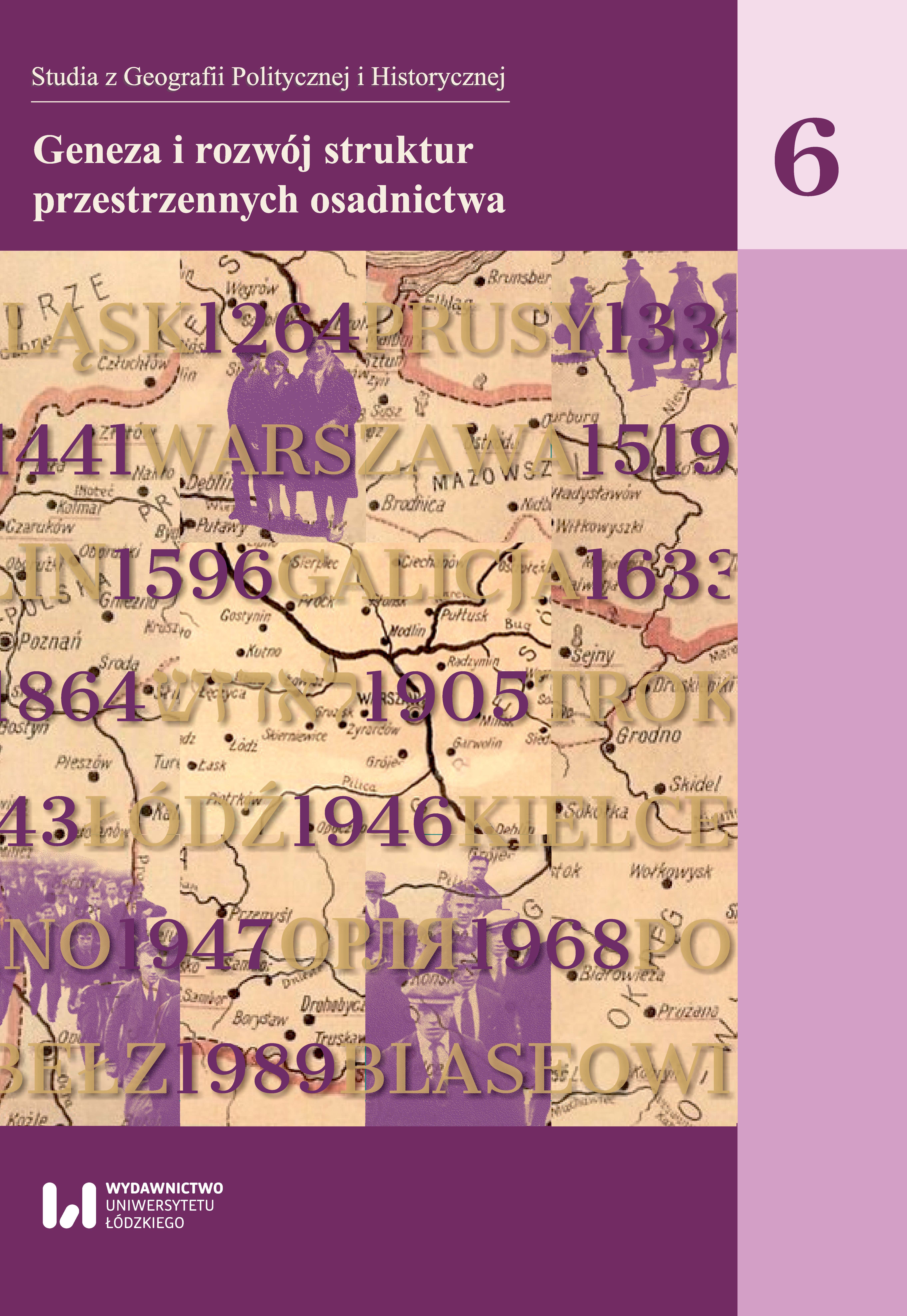Regular spatial layout of the Latin American city – history and development
DOI:
https://doi.org/10.18778/2300-0562.06.01Keywords:
cities, Latin America, checkered plan, socio-urban structureAbstract
The article deals with the spatial organisation of Latin American cities that were founded by the Spaniards during the colonial period (from the 16th to the beginning of the 19th century). The colonial city plan – the “chessboard” proved to be so long-lasting that the modern development of these centres continues to be dominated by regular urban structure, which does not always correspond to the needs of the dynamic growth of these cities and the need for reconstruction of communications systems. At the same time, new phenomena and global processes in the sphere of economy and society lead to changes in spatial structure and intensify socio-spatial fragmentation.
References
Borsdorf A., Bähr J., Janoschka M., 2002, Die Dynamik stadstrukturellen Wandels in Latinamerika im Modell der lateinamerikanischen Stadt, „Geographica Helvetica”,57 (4), s. 300–310.
Google Scholar
Colonial City of Santo Domingo – map of the World Heritage property (oprac. J. Camejo), 2012, skala 1:8000, http://whc.unesco.org/en/list/526/multiple=1&unique_number=615
Google Scholar
Czerny M., 2014, Stare i nowe w przestrzeni miast Ameryki Łacińskiej, Warszawa.
Google Scholar
Escallón C., Artega I., Caicedo V., 2016, Transformaciones en sectores urbanos en consolidación, Bogotá.
Google Scholar
Gormsen E., 1995, Mexiko. Land der Gegensätze und Hoffnungen, Gotha.
Google Scholar
Kraas F., Aggarwal S., Coy M., Mertins G. (red.), 2014, Megacities. Our global urban future, Dodrecht–Heidelberg–New York–London.
Google Scholar
Leyes de Indias, Archivo Digital de la Legislación del Perú: http://www.leyes.congreso.gob.pe/leyes_indias.aspx
Google Scholar
Polibiusz 2005, Dzieje, t. 1, Wrocław.
Google Scholar
Real Cédula expedida en Valladolid, a 2 de agosto de 1513, con las instrucciones dadas a Pedrarias Davila para su viaje y Gobernación de Castilla del Oro http://sajurin.enriquebolanos.org/vega/docs/AVB-CS-T1-DOCUMENTO%2006.pdf
Google Scholar
Sanz Camañes P., 2004, Las ciudades en la América hispana: siglos XV al XVIII, Madrid.
Google Scholar
Silva M.B., 1997, Las dimensiones urbanas. Los patrones coloniales y decimonónicos [w:] 49 Congreso Internacional del Americanistas, Quito: http://www.equiponaya.com.ar/congresos/contenido/49CAI/Silva.htm
Google Scholar
Solano F. de (red.), 1996, Normas y leyes de la ciudad hispanoamericana: 1492–1600, Madrid.
Google Scholar
Unikel L., 1976, El desarrollo urbano de México. Diagnostico e implicaciones futuras, México.
Google Scholar
Wilhelmy H., Borsdorf A., 1984, Die Städte Südamerikas. Teil 1. Wesen und Wandel, Berlin–Stuttgart.
Google Scholar
Witruwiusz, 1999, O architekturze ksiąg dziesięć, Warszawa.
Google Scholar
Downloads
Published
How to Cite
Issue
Section
License

This work is licensed under a Creative Commons Attribution-NonCommercial-NoDerivatives 4.0 International License.








